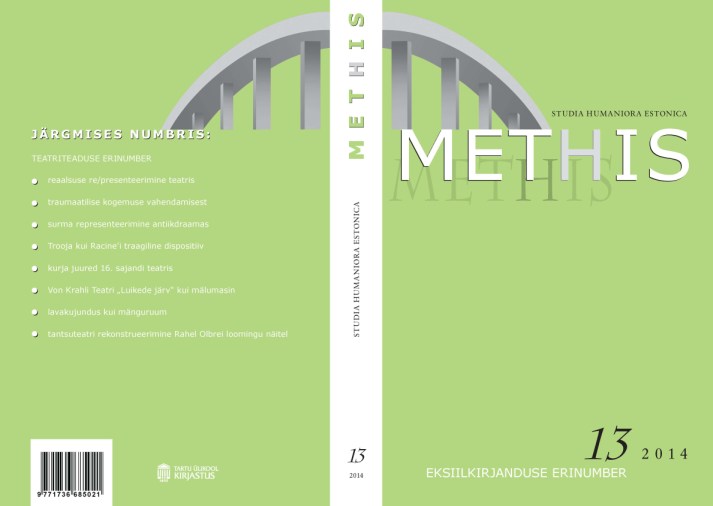Matemaatiline mäng ja „pronksiaeg“. Karl Ristikivi ajalooliste teoste struktuur / The mathematical game and the “Bronze Age”: The structure of Karl Ristikivi’s historical works
DOI:
https://doi.org/10.7592/methis.v10i13.1301Keywords:
Karl Ristikivi, exile literature, historical novels, Northrop Frye, mythAbstract
Between 1961 and his death, Karl Ristikivi published twelve historical works (eleven novels and one short story collection) that form a conceptual whole. The lengthy period covered in these works raises questions about the purpose of the series. While Ristikivi’s Journal 1957–1968 was written nearly half a century ago, it has been available to a wider audience only since its publication in 2008. Although the writer’s works have been researched for several decades, his journal provides new insight into his creative intentions. Ristikivi’s biographical details reveal that he had a wide variety of interests, including history and mathematics. The writer first envisioned writing a series of 12 novels covering the period from the last Ice Age to the First World War while just a student. The journal entries reveal the mature writer’s plans for the historical cycle. First, the series would begin in the middle of the 13th century, specifically in 1255, and finish in 1945 at the end of the Second World War. Second, the author initially planned to write 24 books in which the events described would be separated by 30-year intervals in order to convey a change of generations. Consequently, the writer needed to find events that could be incorporated in this structure, rather than base the structure of his works on certain historical events. Ristikivi’s historical works portray a mythical world where the storyline features the perpetual recurrence of archetypes and replication of all events. His last novel Roman Diary (1976) mentions four eras: the age of gods, the age of heroes, the present (the „Bronze Age“), and the future age. The ages of gods and heroes have passed, and we have reached the third age. The protaganist of Roman Diary, Kaspar von Schmerzburg, longs for the second age – the age of heroes and chivalry. However, he senses that he must be content with the present age because the fourth - the future age - may be even worse as significant moments of the third age lose their relevance. According to Northrop Frye, after experiencing five cycles, it is possible to return to an all-new first, or mythical, era. If one views Ristikivi’s historical works not only as the portrayal of the debasement of high ideals through several trilogies, but as the perpetual repetition or ascent from the end of one cycle to the beginning of the next, it is possible to understand Ristikivi’s historial series from a completely different perspective.


